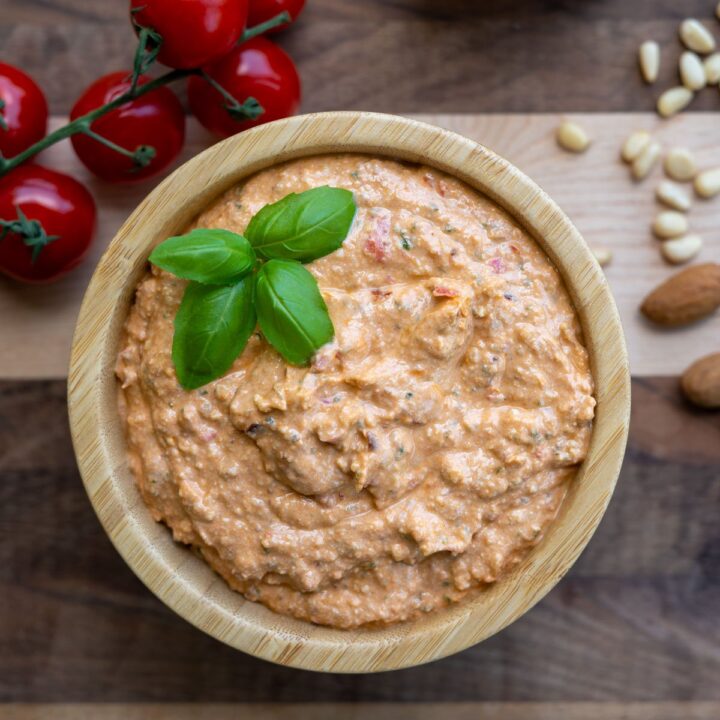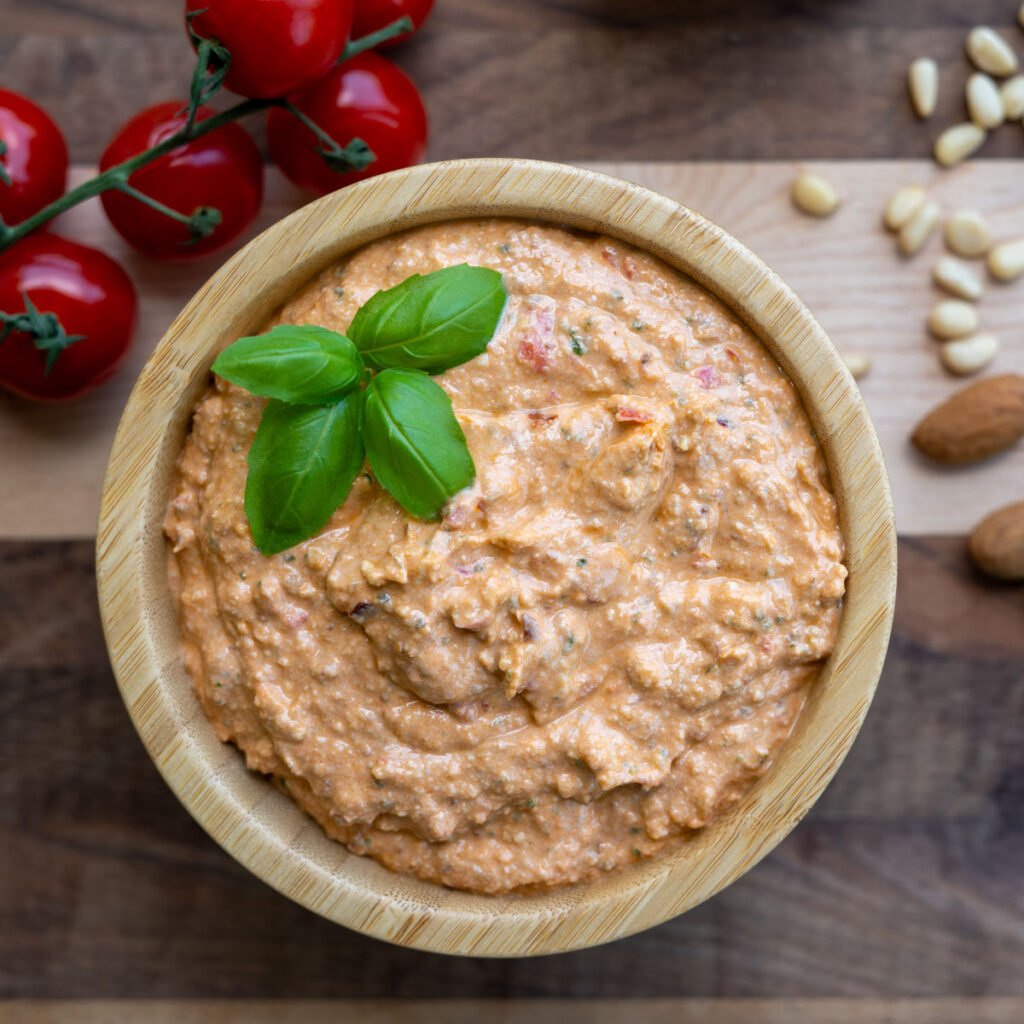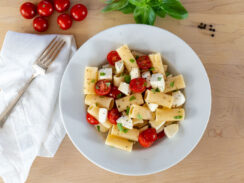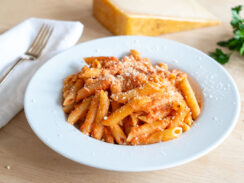Pesto alla siciliana
Outside of Italy, the world thinks of Italian food as one big category. That couldn’t be further from the truth, though. Italian culinary traditions and ingredients actually vary significantly by region, influenced heavily by the climate, the land, and the plants and animals that inhabit it.
The bright green sauce we know as pesto is actually pesto alla genovese, this version with basil, olive oil, pine nuts and Parmigiano Reggiano originating in the region of Liguria, where the city of Genova is found.
However, the word pesto, which originates comes from pestello, or pestle in English, refers to any combination of ingredients ground together by mortar and pestle. Southern Italy has provided several variations of pesto, none of which are green in color, and all of which make good use of the foods that grow in that sun-drenched part of the country.
From Calabria, we have pesto alla calabrese, with roasted red peppers, eggplant, ricotta, and just a bit of tomato. The Sicilian pesto alla siciliana leaves out the red peppers and the eggplant, instead prioritizing the tomato and ricotta while keeping the pine nuts common to the genovese version. The Sicilian city of Trapani yields yet another version, pesto alla trapanese, with tomatoes, almonds, and pecorino cheese.
We based our version on the classic pesto alla siciliana recipe, but borrowed the almonds from the trapanese version and used ricotta salata along with fresh ricotta and Parmigiano Reggiano for a more complex cheese flavor.
Like all pesto, pesto alla siciliana is most often used to dress pasta, but is it also delicious as a spread for bruschette.
Wine Pairing
We recommend a Nero d’Avola with pesto alla siciliana, as the Nero d’Avola is an indigenous Sicilian grape. This well-balanced red wine has a nice acidity that complements the pesto’s cheese and tomato base. One to try is Nero d’Avola from Cantine Colosi, a beautiful winery located on one of the Aeolian islands off the coast of Sicily.

Pesto alla siciliana
Southern Italy has provided a few different variations of pesto, making good use of the foods that grow in that sun-drenched part of the country. Pesto alla siciliana combines tomatoes with blend of cheeses and nuts for a complex, harmonious flavor.
Ingredients
- 1 medium tomato
- 50 grams fresh ricotta
- 25 grams ricotta salata
- 25 grams Parmigiano Reggiano
- 25 grams pine nuts
- 25 grams almonds
- 1 small bunch of fresh basil
- 1/2 clove garlic
- 1 and 1/2 tsp salt
- 1 tsp extra virgin olive oil
- 1 tsp crushed red pepper
Instructions
Cut the tomato into small pieces and place them into a food processor.
Add the fresh ricotta.
Cut the ricotta salata and Parmigiano into small pieces and add them to the food processor.
Add the pine nuts and almonds, and then the basil.
Chop the garlic and add it as well, along with the salt, olive oil and crushed red pepper.
Blend in the food processor until smooth.
Toss with short pasta cooked to al dente, and serve with a dusting of fresh grated Parmigiano on top.
Notes
Experiment with different tomatoes, using whatever is in season and local.
Go out of your way to get good, fresh ricotta, from an Italian deli or a speciality cheese shop.
Ricotta salata is a hard Italian cheese made from sheep’s milk. It is white in color and dense, somewhat similar to a feta. You may have to look around to find it. If you come up short, just double the amount of Parmigiano.
We prefer pesto alla siciliana on short pasta. For this meal, we used a pasta produced made in the south of Italy, fusillata casareccia made by Pastificio G. Di Martino.



Simona
The pesto looks good as a dip too!